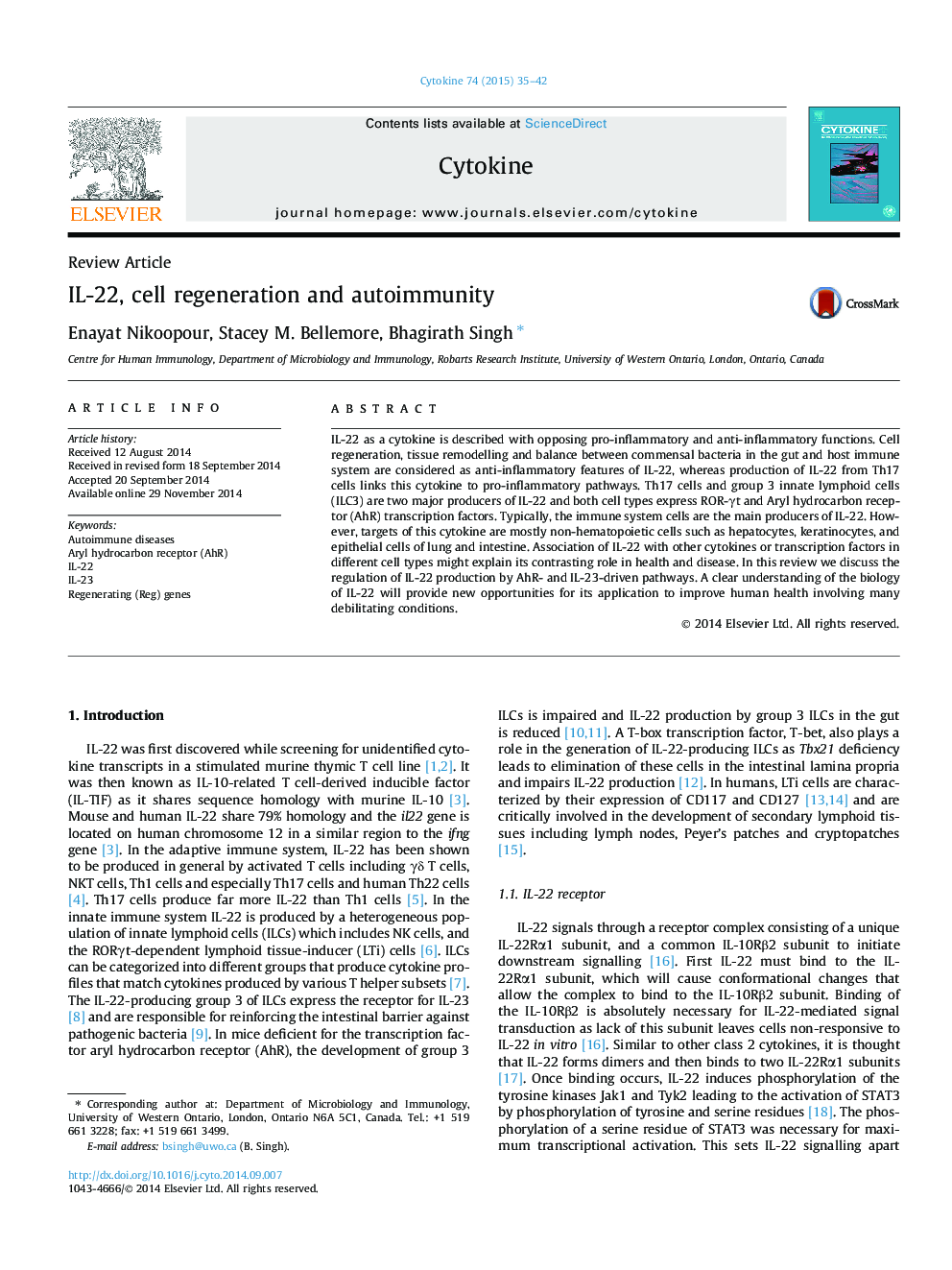| Article ID | Journal | Published Year | Pages | File Type |
|---|---|---|---|---|
| 5897029 | Cytokine | 2015 | 8 Pages |
â¢IL-22 has opposing pro-inflammatory and tissue protective anti-inflammatory roles in autoimmunity.â¢Aryl hydrocarbon receptor (AhR) and IL-23 control IL-22 production by Th17 cells.â¢The balance between IL-23 and Ahr pathways is lost in pathological conditions.â¢IL-22 targets non-hematopoietic epithelial cells in gut, liver, pancreatic islets and skin.â¢IL-22 induces regenerating (Reg) genes regulating microbiota and cell regeneration.
IL-22 as a cytokine is described with opposing pro-inflammatory and anti-inflammatory functions. Cell regeneration, tissue remodelling and balance between commensal bacteria in the gut and host immune system are considered as anti-inflammatory features of IL-22, whereas production of IL-22 from Th17 cells links this cytokine to pro-inflammatory pathways. Th17 cells and group 3 innate lymphoid cells (ILC3) are two major producers of IL-22 and both cell types express ROR-γt and Aryl hydrocarbon receptor (AhR) transcription factors. Typically, the immune system cells are the main producers of IL-22. However, targets of this cytokine are mostly non-hematopoietic cells such as hepatocytes, keratinocytes, and epithelial cells of lung and intestine. Association of IL-22 with other cytokines or transcription factors in different cell types might explain its contrasting role in health and disease. In this review we discuss the regulation of IL-22 production by AhR- and IL-23-driven pathways. A clear understanding of the biology of IL-22 will provide new opportunities for its application to improve human health involving many debilitating conditions.
